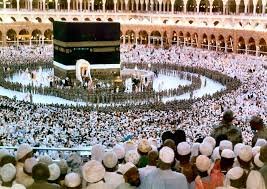Introduction
Across the world, different countries have different cultures depending on racial and ethnic composition of citizens. Countries that have diverse races or ethnicities appear to have diverse cultures, while countries that have one race or ethnicity have common culture. Normally, the culture of a given population comprises of several elements of culture. Andersen and Taylor (2011) assert that elements of culture are norms, beliefs, values, and language, which comprise of material and immaterial things.
In essence, culture consists of concrete and abstract elements that shape human and societal behaviors across all ages. Since different countries have different cultures due to their racial and ethnic differences, people exhibit unique behaviors that reflect their respective norms, beliefs, values, and languages. Owing to globalization and increased intercultural interaction, people need to learn about other cultures.
Learning other cultures is necessary because it enhances intercultural communication, which plays an important role in promoting economic, social, and political aspects of a country. In this view, by having common norms, beliefs, values, and languages, people can easily interact and perform businesses without undue cultural restrictions. Therefore, this essay examines elements of the Saudi Arabian culture with the objective of helping visitors to enjoy their stay in Saudi Arabia.
Family, Marriage, and Children
Family and marriage are central in the Saudi Arabian culture because they signify the procreative ability of the society. In Saudi Arabia, family is a crucial social institution because it enhances the social status of an individual. The family provides an opportunity for parents to take care of their children and create businesses for the benefit of the family and society.
The Saudi Arabian family has patriarchal structure, which makes husband the head the family with great responsibilities of protecting and providing for the family. Owing to the patriarchal structure, the family assumes the identity of the father. In this case, Sharia law (Islamic law) makes the father to be the custodian of the children when they are still young.
According to Bowen (2008), Sharia law favors men because “in case of divorce, they receive custody of all children; boys at the age of seven and girls at the age of nine” (p. 11). This means that Saudi Arabian culture gives men the right to be custodians of children in the event of separation or divorce. Therefore, a foreign woman needs to know the state of family law in Saudi Arabia before marrying a Saudi Arabian man.
In Saudi Arabia, marriage is a civil contract where a husband pays dowry in the presence of family witnesses who sign marriage agreement. The aged family members have the responsibility of discussing marriage issues and signing the marriage agreement. Bowen (2008) states that, “marriage in Saudi Arabia is contractual, with rights and obligations established by means of a formal prenuptial agreement” (p. 11).
Throughout the marriage period, wives are subject to their respective husbands who have absolute authority over what they do. Before marriage, fathers or male relatives dictate what women do in terms of work, education, and behavior, while husbands take over the role when they marry them.
In the society, the responsibilities of women lie within the family, while the responsibilities of men lie in the public realm. Women have powers in making decisions regarding household duties and upbringing of children. Moreover, Sharia law allows men to marry up to four wives provided they treat them equally. Hence, foreigners need to understand that women in Saudi Arabia are under absolute authority of men and that polygamy is legal.
Norms, Religion, and Education
Saudi Arabia is a country in the Middle East that exhibit cultural homogeneity as the citizens have a common culture. Cultural homogeneity is evident as Arabic is an official language and people believe in one religion of Sunni Islam. Additionally, Saudi Arabian monarchy is a political culture that supports homogeneity of the Saudi Arabian culture in the Middle East.
The Saudi Arabians, therefore, share cultural elements that define their norms, beliefs, customs, traditions, superstitions, taboos, and language. Cultural elements of the Saudi Arabian culture are familiar in the Arab countries. Transfer of cultural elements from one generation to another depends on beliefs and norms govern families.
In Saudi Arabia, beliefs and values that shape the culture of Saudi Arabians emanate from families and social structures. Norris and Inglehart (2012) argue that theories of multiculturalism envisage that people “acquire deep-rooted and enduring social norms and cultural values through the process of childhood socialization within the family, local community, and country” (p. 235). Thus, family and social structures of the Saudi Arabian culture have significant impact on beliefs, norms, and values of the people.
Sunni Islam is a dominant religion in Saudi Arabia as it dictates the culture of people. Beliefs, norms, and values that Saudi Arabians uphold mirror Islamic teachings that are in the Quran and Sharia law. For example, the Quran teaches Muslims to dress in a decent and modest manner to discourage sexual temptations (Aziz, 2010).
The dress code of Muslims in Saudi Arabia aims at concealing rather than revealing sensitive areas of the body that the culture considers private. Unlike in the United States where people have freedom of dressing so long as the dress code is not explicit. Since legislations support the dress code, everyone in Saudi Arabia including foreigners must dress decently. While men wear white caps (taiga) and robe (throbe), women wear cloak (abayah) and head scarf.
According to the Saudi Arabian culture, foreign men must put on long trousers that loosely fit and dress in shirts that cover upper part of the body well. The culture also dictates women to dress in long skirts, which fit loosely with hem covering the knees. In this view, foreigners need to understand how to dress lest they violate dress code that the Saudi Arabian culture and legislations stipulate.
Saudi Arabia has integrated Islamic religion into its education system. The government of Saudi Arabia has made basic education compulsory, and thus many students have been able to pursue their education. Through education, students study theology and cultural studies, which have enabled Islamic monarchy to thrive in Saudi Arabia (Hefner, & Zaman, 2010).
Though men have higher literacy levels than women, current statistics indicate that Saudi Arabia has the highest number of graduates in the Middle East (Sabry, 2012). Despite the fact that the official language is Arabic, the education system of Saudi Arabia provides quality education.
Superstitions, Taboos, and Gestures
Islamic religion, which shapes Saudi Arabian culture, has numerous superstitions that revolve around many issues that affect humanity. For example, Sikhism (2013) states that, “if a fly falls on your food, take it and immerse it once more because according to the prophet Mohammed, the fly carries the medicine on one wing to counter the disease it carries on the other wing” (para. 1).
Such superstition portrays a different way of how Muslims deal with flies when compared to other cultures. Another superstition is that when Satan urinates into ears, a person sleeps until sunrise (Sikhism, 2013). The superstition encourages people to wake up early so that they do not appear as if Satan has urinated on their ears.
In addition to superstitions, the Saudi Arabian culture has some taboos. For instance, pointing at a person using a heel, toe, or any part of the foot is offensive in the Saudi Arabian culture. Moreover, nudity is a taboo because it demeans the dignity of human beings. Concerning food, Wang (2008) states that the Saudi Arabian culture regard eating of pork and drinking of alcohol as taboos. Hence, basing on these few taboos, one needs to understand their relevance in the Saudi Arabian culture.
Saudi Arabian culture restricts gestures that people use. For example, the culture does not allow men and women to have direct eye contact because it encourages promiscuous behavior. Moreover, the Saudi Arabian culture does not allow men and women to interact freely to prevent sexual temptation.
Thus, women and men do not hug or hold one another in a suggestive manner, unless they are married couples (Center for Intercultural Learning, 2009). Hence, foreigners should be cautious when using gestures in Saudi Arabia because some gestures are offensive to Arabs.
Important Events in History
Mecca and Medina are historical places that tourists must visit in Saudi Arabia because they are sacred places that have significant importance to the Saudi Arabian culture. Soharwardy (2012) states Mecca and Medina are sacred sanctuaries where Muslims across the world visit during their pilgrimage. As Muslims mark Ramadan and Hajj, they visit pilgrim sites where they worship and celebrate their religious festivities.


Conclusion
Saudi Arabian culture is a culture that has dominant beliefs, values, norms, and traditions that reflect Islamic culture. In this view, observation of Islamic beliefs, norms, values, and traditions enables people to understand the Saudi Arabian culture and adopt it. Islamic religion defines family structure, marriage, dress code, superstitions, taboos, food, gestures, and social interaction. Hence, foreigners need to adhere to Islamic beliefs, norms, values, and traditions while in Saudi Arabia to prevent occurrence of intercultural conflicts.
References
Andersen, M., & Taylor, H. (2011). Sociology: The essentials (7th ed.). New York: Cengage Learning.
Aziz, R. (2010). Hijab-The Islamic dress code: Its historical development, evidence from scared sources and views of selected Muslim scholars. Web.
Bowen, W. (2008). The history of Saudi Arabia. London: Greenwood Publishing Group.
Center for Intercultural Learning (2009). Cultural information: Saudi Arabia. Web.
Hefner, R., & Zaman, M. (2010). Schooling Islam: the culture and politics of modern Muslim education. New York: Princeton University Press.
Norris, P., & Inglehart, R. (2012). Muslim integration into Western cultures. Political Studies, 60(1), 228-251.
Sabry, T. (2012). Arab cultural studies: Mapping the field. London: I.B. Tauris.
Sikhism, I. (2013). ‘Superstitious’ Hadiths Explained. Web.
Soharwardy, S. (2012). Makkah and Madinah. Web.
Wang, H. (2008). Communication with Saudis. Asian Social Science, 4(11), 124-130.